Every year, on the picturesque streets of Naha, Okinawa, an extraordinary event takes place that bridges the gap between tradition and celebration. The Naha Tug of War, known locally as “那覇大綱挽” (Naha Ōtsunahiki), is a cultural extravaganza deeply rooted in history and pride. In 1450, it began as the Keiga Tug, and over time, it transformed into a magnificent spectacle, symbolizing happiness, peace, prosperity, and well-being for the people of Okinawa. In 1971, it was revived as part of Naha City’s 50th-anniversary celebration and has since grown into a world-renowned event.
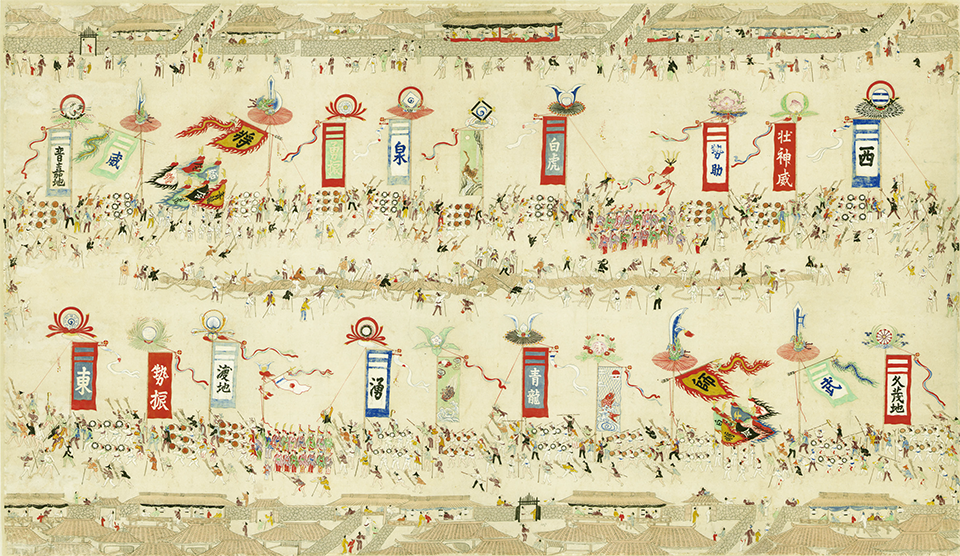
Photo source: https://www.naha-otsunahiki.org/
A Guinness World Record Holder
The Naha Tug of War is no ordinary event. In 1995, it earned its place in the Guinness World Records as the world’s longest tug of war rope, measuring an astounding 200 meters in length and weighing a colossal 43 tons. What’s even more remarkable is the sheer number of participants: 15,000 people pulling with all their might, alongside 270,000 spectators, both local and international. This record-breaking event has transformed into a symbol of Okinawa, drawing participants and onlookers from all corners of the world.
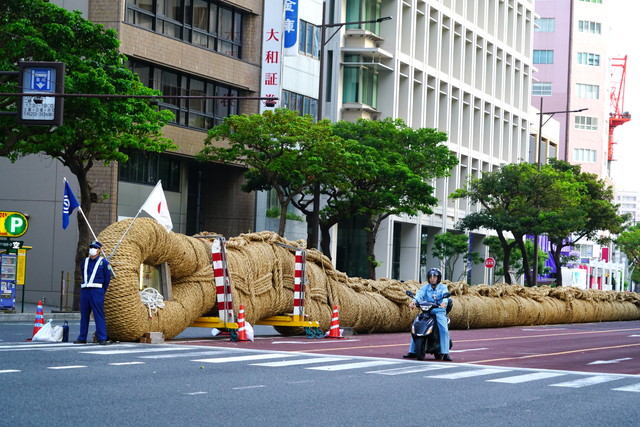
Photo source: https://www.naha-otsunahiki.org/
From Rain Rituals to City Symbolism
One of the unique aspects of Naha Tug of War is its fusion of rural and urban traditions. While traditional tug of war in rural areas often symbolizes rain-making, bountiful harvests, and wishes for prosperity, Naha’s urban tug of war represents the vibrant trading city that it has become over the centuries.
In its early days, Naha was a bustling port village known as “Ukishima” (Floating Island). As it developed and expanded, various neighborhoods like Kumemura, home to Chinese immigrants, and the majestic Shuri Castle, played pivotal roles in its growth. Naha’s urban tug of war emerged as a platform for different neighborhoods to showcase their spirit and compete, becoming a testament to the city’s rich history and development.
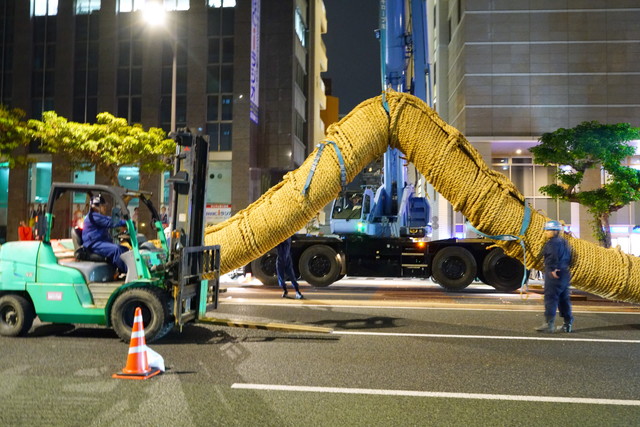
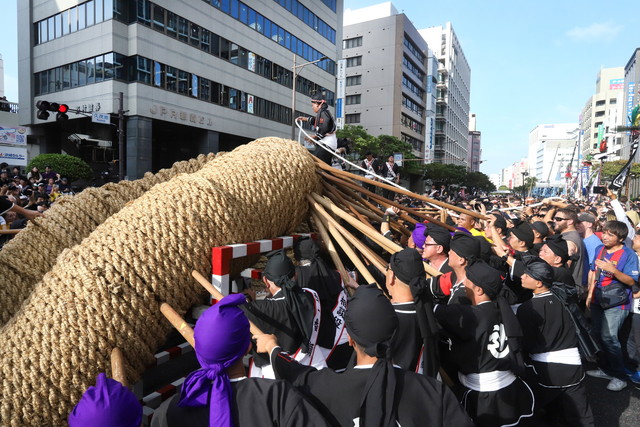

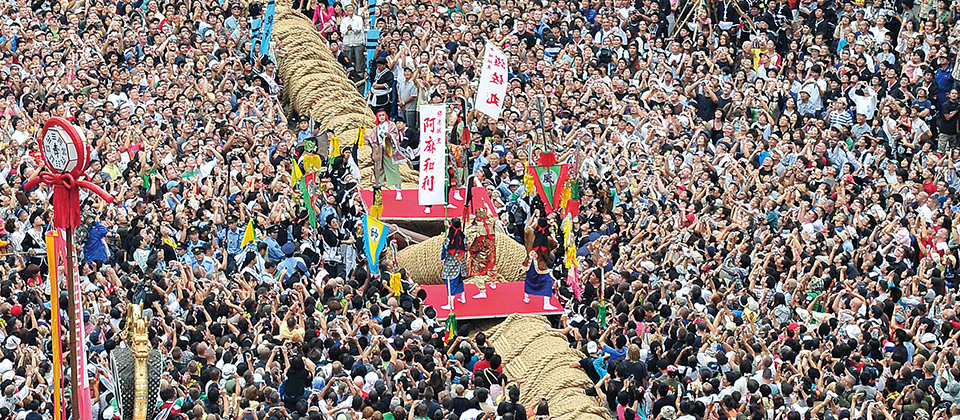
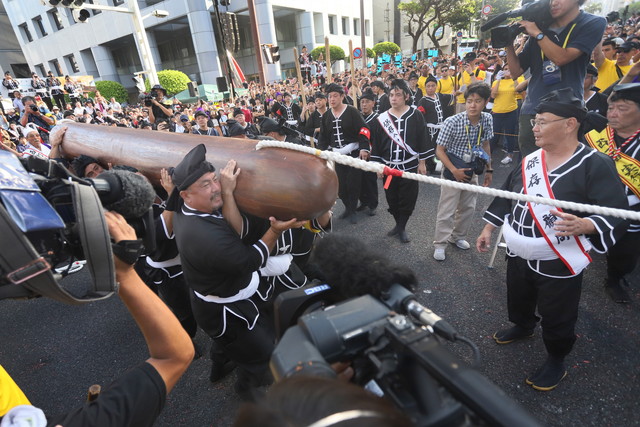
Photo source: https://www.naha-otsunahiki.org/
The Heart of the Festival: Ufunnasnei (Flagbearer Procession)

Photo source: https://www.naha-otsunahiki.org/
Among the many captivating elements of Naha Tug of War, one that stands out is the “Ufunnasnei,” the flagbearer procession. This mesmerizing spectacle features young men, known as “Nīsētā” (Young Fellows), dressed in black attire with “Mumunuhichantā”, a type of traditional garment, as they dance with large flags, known as “Hatagashira” (Head Flags).
These flags, known as “Hatagashira” (Head Flags), have a deep significance in Okinawa’s culture. They are considered the village’s symbols and guardian spirits. Crafted by skilled artisans, they bear the pride and prosperity of each community.
Join the Celebration
If you’re planning to attend the 2023 Naha Tug of War, here are some key details:
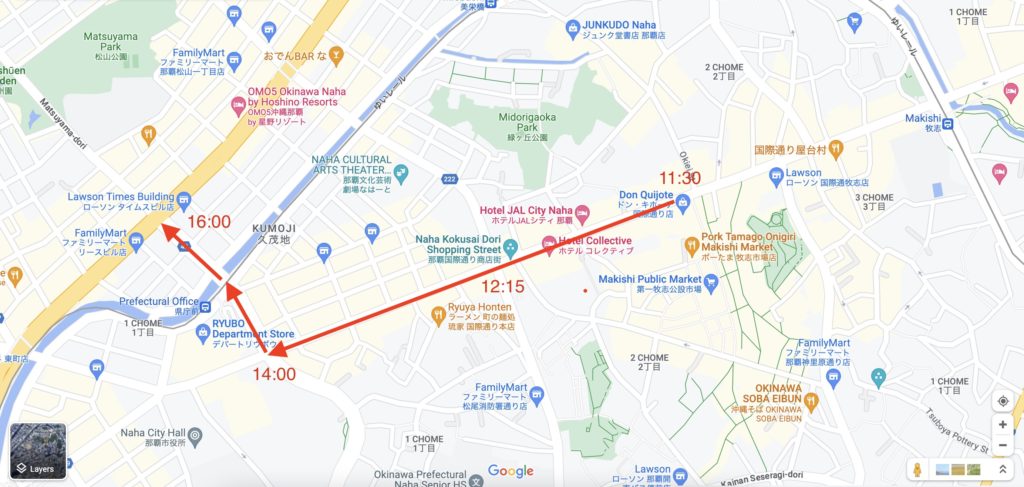
Google Pins for key events below: 11:00 → 12:15 → 14:00 → 16:00
- Flagbearer Procession (Ufunnasnei)
- Date: October 8, 2023 (Sunday)
- Time: 11:30 AM to approximately 2:00 PM
- Location: Kokusai Street (parade route map above 👆)
- Tug of War (Naha Ōtsunahiki)
- Date: October 8, 2023 (Sunday)
- Time: Approximately 4:00 PM
- Location: Kumoji Intersection (National Route 58) – Google Pin
Important Festival Guidelines
While attending the Naha Tug of War, please keep these guidelines in mind:
- Do not bring any sharp objects (such as knives or scissors) or drones to the event.
- If you have a fever or are feeling unwell on the day of the event, please refrain from participating.
Parking Information
For parking options during the event, visit this guide about Parking Lots Around Kokusai Street.
Don’t miss the chance to be part of this incredible cultural celebration that bridges the gap between tradition and modernity. The Naha Tug of War is not just a world record holder but a testament to the enduring spirit of Okinawa’s people and their rich heritage. Join in the festivities, witness the breathtaking flagbearer procession, and experience the unique charm of Naha’s urban tug of war.